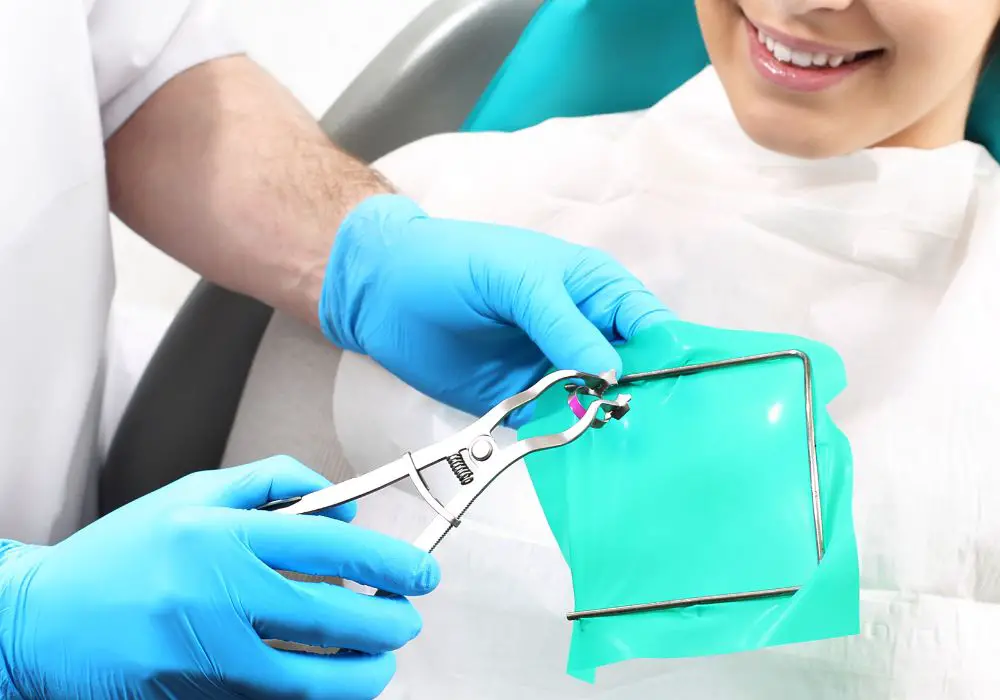If you have been experiencing pain in your front tooth, you may be wondering if you need a root canal. A root canal is a dental procedure that is used to treat an infected or damaged tooth. The procedure involves removing the damaged pulp from the tooth and filling it with a special material to prevent further damage.
Some of the most common symptoms of a root canal on a front tooth include pain, sensitivity, and swelling. You may also notice discoloration of the affected tooth or a small bump on the gum near the tooth. If you are experiencing any of these symptoms, it is important to see your dentist as soon as possible to determine if a root canal is necessary.
It is important to note that not all tooth pain requires a root canal. Your dentist will perform a thorough examination and may take x-rays to determine the cause of your symptoms. If a root canal is necessary, the procedure can typically be completed in one or two visits and can provide relief from your symptoms.
Understanding Root Canals

If you’ve been told you need a root canal on a front tooth, you may have some questions about the procedure. Understanding what a root canal is and why it’s necessary can help ease your worries and prepare you for what to expect.
What is a Root Canal?
A root canal is a dental procedure that involves removing the damaged or infected pulp from inside a tooth. The pulp is the soft tissue that contains nerves and blood vessels, and when it becomes infected or damaged, it can cause a lot of pain and discomfort.
During a root canal, your dentist or endodontist will numb the area around the tooth and make a small hole in the top of the tooth to access the pulp. They will then use special tools to remove the pulp and clean out the inside of the tooth. Once the tooth is clean, they will fill it with a special material and seal it with a filling or crown.
Why are Root Canals Necessary?
Root canals are necessary when the pulp inside a tooth becomes infected or damaged. This can happen for a variety of reasons, including:
- Deep decay
- Repeated dental procedures on the same tooth
- A crack or chip in the tooth
- Trauma to the tooth
If left untreated, an infected or damaged pulp can lead to an abscess, which is a pocket of pus that forms at the root of the tooth. This can cause severe pain, swelling, and even bone loss in the jaw.
By removing the damaged pulp and sealing the tooth, a root canal can prevent further damage and save your tooth from extraction. In fact, root canals have a success rate of over 95%, making them a safe and effective way to treat damaged or infected teeth.
Now that you have a better understanding of what a root canal is and why it’s necessary, you can feel more confident about your upcoming procedure. Your dentist or endodontist will be able to answer any additional questions you may have and help you prepare for a successful root canal on your front tooth.
Identifying Symptoms of a Root Canal
If you have a front tooth that is causing you pain or discomfort, it may be a sign that you need a root canal. Here are some common symptoms to look out for:
Pain and Discomfort
One of the most common symptoms of a root canal on a front tooth is pain and discomfort. You may feel a sharp or throbbing pain in the affected tooth, or you may experience a dull ache that persists throughout the day. The pain may be worse when you bite down or put pressure on the tooth.
Sensitivity to Heat and Cold
Another symptom of a root canal on a front tooth is sensitivity to heat and cold. You may notice that your tooth is more sensitive than usual when you eat or drink something hot or cold. This sensitivity may be accompanied by pain or discomfort.
Swelling and Discoloration
Swelling and discoloration are also common symptoms of a root canal on a front tooth. You may notice that your gums are swollen or tender around the affected tooth, or you may see a small bump on the gum line. The tooth itself may also appear discolored or darker than the surrounding teeth.
Prolonged Bad Breath or Bad Taste
If you have a root canal on a front tooth, you may also experience prolonged bad breath or a bad taste in your mouth. This is because the bacteria that cause the infection can produce a foul odor or taste.
If you are experiencing any of these symptoms, it is important to see a dentist as soon as possible. A root canal can help to alleviate your pain and discomfort and prevent further damage to your tooth.
Symptoms Specific to Front Teeth

If you’re experiencing symptoms of a root canal on a front tooth, you may be wondering what to expect. Here are some symptoms that are specific to front teeth:
Visibility of Infection
One of the most noticeable symptoms of a root canal on a front tooth is the visibility of the infection. Because front teeth are visible when you smile, any discoloration or swelling can be more noticeable. You may notice that the affected tooth is darker in color than your other teeth, or that the gum around the tooth is swollen or red.
Impact on Smile and Confidence
In addition to the physical symptoms, a root canal on a front tooth can also impact your smile and confidence. If the affected tooth is discolored or visibly infected, you may feel self-conscious about smiling or talking in front of others. This can have a negative impact on your overall confidence and quality of life.
If you’re experiencing any of these symptoms, it’s important to see a dentist as soon as possible. A root canal can help alleviate the pain and discomfort associated with an infected tooth, and can restore the health and appearance of your smile.
Remember, the earlier you seek treatment, the better your chances of a successful outcome. Don’t wait until the pain becomes unbearable or the infection spreads to other teeth. Contact your dentist today to schedule an appointment and get the relief you need.
When to Seek Dental Help
If you experience any symptoms of a root canal on a front tooth, it is important to seek dental help as soon as possible. Delaying treatment can lead to further complications and even tooth loss. Here are some signs that you should seek dental help:
Persistent Symptoms
If you have persistent toothache, sensitivity to hot or cold temperatures, or swelling and tenderness in the gums, you should seek dental help. These symptoms may indicate that the pulp inside your tooth is infected or inflamed, and a root canal may be necessary to save the tooth.
Increasing Severity of Symptoms
If your symptoms are getting worse over time, it is important to seek dental help immediately. This may indicate that the infection or inflammation is spreading and could lead to more serious complications, such as an abscess or tooth loss.
In addition to these symptoms, you should also seek dental help if you experience any of the following:
- Pain or discomfort when biting or chewing
- Discoloration of the affected tooth
- A foul taste or odor in your mouth
- A fever or other signs of infection
Remember, the earlier you seek dental help for a root canal on a front tooth, the better your chances of saving the tooth and avoiding further complications. So don’t hesitate to make an appointment with your dentist if you experience any of these symptoms.
Preventing Root Canal Issues

Root canal therapy can be a painful and expensive procedure. However, there are several measures you can take to prevent the need for a root canal on a front tooth. Here are some tips to keep your teeth healthy:
Regular Dental Check-ups
One of the most effective ways to prevent root canal issues is to schedule regular dental check-ups. During these visits, your dentist will examine your teeth and gums for any signs of decay or infection. If a problem is detected early, it can often be treated with a simple filling or other less invasive procedure.
Good Oral Hygiene Practices
Practicing good oral hygiene is essential for preventing tooth decay and other dental problems. Here are some tips to help keep your teeth healthy:
- Brush your teeth twice a day with fluoride toothpaste.
- Floss daily to remove plaque and food particles from between your teeth.
- Use mouthwash to kill bacteria and freshen your breath.
- Avoid sugary and acidic foods and drinks, which can erode tooth enamel and lead to decay.
- Drink plenty of water to help flush out bacteria and keep your mouth hydrated.
By following these simple tips, you can help prevent the need for a root canal on a front tooth. Remember, prevention is always better than cure, so make sure to take good care of your teeth and gums.
Frequently Asked Questions
What are some common symptoms of a root canal on a front tooth?
Common symptoms of a root canal on a front tooth include severe toothache, sensitivity to hot and cold temperatures, swelling, tenderness, and discoloration of the tooth. You may also experience gum or facial swelling and a pimple or boil on your gums.
How long does recovery take after a root canal on a front tooth?
Recovery time after a root canal on a front tooth varies from person to person. You may experience some discomfort for a few days after the procedure, but it should gradually subside. You should be able to resume normal activities within a day or two.
What is the procedure for a root canal on a front tooth?
The procedure for a root canal on a front tooth involves removing the infected or damaged pulp from the tooth and cleaning out the root canals. The tooth is then filled with a special material to prevent further infection. In some cases, a crown may be placed over the tooth to provide additional support.
Can a root canal on a front tooth still hurt after the procedure?
It is normal to experience some discomfort after a root canal on a front tooth, but it should gradually subside over time. If you experience severe pain or swelling, you should contact your dentist immediately.
Do I need a crown after a root canal on a front tooth?
In some cases, a crown may be necessary after a root canal on a front tooth to provide additional support. Your dentist will evaluate your specific situation and recommend the appropriate treatment plan.
How do I know if my front tooth requires a root canal?
If you experience severe toothache, sensitivity to hot and cold temperatures, swelling, tenderness, and discoloration of the tooth, you may need a root canal on your front tooth. It is important to schedule an appointment with your dentist as soon as possible to determine the best course of treatment.






